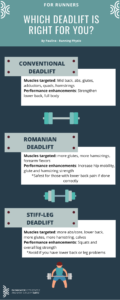Why is foot fitness important?
By Podiatrists Russel Rubin and Trevor Proskewitz
Foot Fitness and Why It’s Important
- Want to wake up bright and happy each morning, but your plantar fasciitis makes getting out of bed painful?
- Want to hit the gym, but your achilles tendonitis is flaring up?
- Want to take your dog out for a walk, but your bunions are too painful?
- Want to take the stairs instead of the lift, but your arthritis makes it impossible?
- Want to chase after your kids in the park, but you’re suffering from shin splints?
If your feet are not functioning at their optimal best, it adversely affects your physical health of your entire body since you use your feet in just about every activity you do – standing, walking, running. They support you, keep you balanced and take you everywhere you want to go. They are the foundation of your entire body but you probably don’t give them a second thought – until you’ve developed a foot problem.
Your foot structure
Each foot has 33 joints, 26 bones and more than 100 muscles, tendons, and ligaments encased by thick connective tissue called fascia. Since human beings evolved as a species that stands upright, the feet are the body’s foundations.
Foot pain can erode our overall health and wellbeing. Any imbalance in your feet will impact our body’s alignment. Flat arches, bunions, plantar fasciitis and arthritis are just a few common complaints. As we age, these conditions can have a debilitating effect on our quality of life. The fact is, foot complaints are never isolated – they can cause, or be caused by, issues elsewhere in your body. Once foot pain sets in, it can limit mobility and contribute to a sedentary lifestyle, which is associated with many chronic illnesses.
The cycle is vicious but preventable. By focusing on improving the strength and mobility of your feet, you can reclaim your health, improve how the rest of your body feels and functions and enhance your quality of life.
Pay attention to your feet
Do you feel tingling and numbness at night? It could mean you have a nutritional deficiency or that your blood sugar levels need to be checked. Fungal infections could mean that your digestive system or immune system is under stress.
Your footwear
Women who wear high heels put stress on the foot and ankle which can result in bunions, hammertoes, neuromas and plantar fasciitis. Children who wear shoes that don’t fit correctly can be subject to pain. This is exacerbated if they have flat feet, are pigeon-toed or have Sever’s disease.
Strengthen your feet
Start your journey to fitter feet by practicing regular strength and mobility exercises that target your feet, ankles, hips, and core. Strength training can keep your feet limber and improve mobility. Stretching throughout the day and regular strength training will help with everyday endurance, while wearing supportive footwear can also make a difference.


 1. Traditional/Conventional Deadlift (DL)
1. Traditional/Conventional Deadlift (DL)